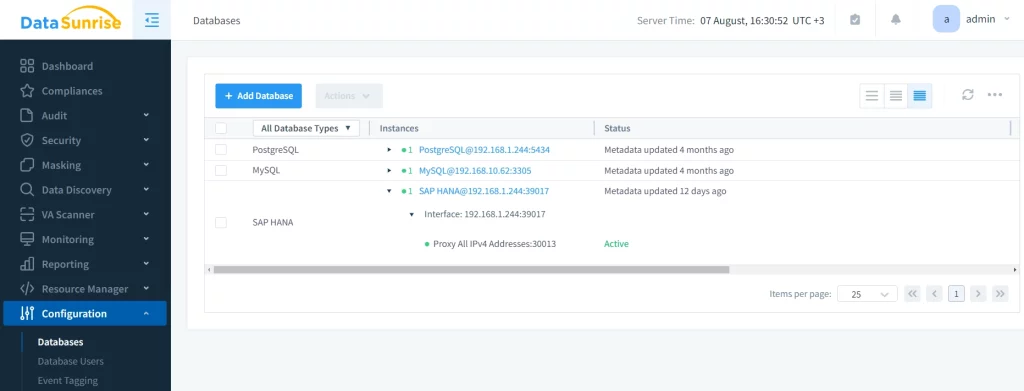
Enhancing SAP HANA Data Security with Static Data Masking

Introduction
In today’s data-driven world, protecting sensitive information is crucial for businesses. Static data masking for SAP HANA is a helpful tool for organizations. It allows them to protect their data while still using it for testing and development purposes.
A recent study found that 60% of companies have data breaches because they don’t have enough protection for their data. This alarming statistic highlights the importance of implementing robust data masking strategies.
What is Static Data Masking?
Data masking is a process that involves replacing sensitive information in production data with realistic but fake data. This approach allows organizations to use masked data for various purposes without exposing actual confidential information. Key benefits include:
- Enhanced data security
- Regulatory compliance
- Reduced risk of data breaches
- Improved testing accuracy
Static Data Masking for SAP HANA Native Capabilities
SAP HANA offers several native capabilities for data masking, including both static and dynamic masking options. Let’s explore some of these features:
Native Masking Functions
SAP HANA provides built-in functions for basic data masking:
-- Mask the last four digits of a credit card number SELECT MASK_CREDIT_CARD_NUMBER(credit_card) AS masked_cc FROM customer_table; -- Mask an email address SELECT MASK_EMAIL(email) AS masked_email FROM employee_table;
Custom Masking with SQL
For more complex masking requirements, you can create custom SQL queries:
-- Custom masking for phone numbers SELECT CONCAT(LEFT(phone_number, 3), '-XXX-', RIGHT(phone_number, 4)) AS masked_phone FROM contact_info;
Data Anonymization with HANA SQL Script
SAP HANA allows you to create more advanced masking logic using HANA SQL Script:
CREATE PROCEDURE mask_customer_data()
LANGUAGE SQLSCRIPT AS
BEGIN
UPDATE customer_table
SET
name = CONCAT(LEFT(name, 1), REPEAT('*', LENGTH(name) - 1)),
email = CONCAT(LEFT(email, 2), '***', SUBSTRING(email, INSTR(email, '@')));
END;Implementing Static Data Masking with DataSunrise
SAP HANA has masking features, but tools like DataSunrise offer better and easier solutions for hiding data. Here’s how to set up DataSunrise for SAP HANA:
Creating a DataSunrise Instance
- Install DataSunrise on your preferred platform
- Connect DataSunrise to your SAP HANA database
- Configure user access and permissions

Setting Up Static Masking Tasks
- Navigate to the Data Masking module in DataSunrise
- Create a new Static Masking Task for SAP HANA
- Select source and target databases
- Choose tables and columns to mask
- Apply appropriate masking methods (e.g., substitution, shuffling, encryption)
- Schedule the task execution


Viewing Masked Data
To see masked data for some users and unmasked data for others:
- Create different user roles in SAP HANA
- Configure DataSunrise to apply masking rules based on user roles
- Test access with different user accounts to verify masking effectiveness
Performing Static Masking by Copying Tables
To create a fully masked copy of a table in SAP HANA using DataSunrise:
- In the Static Masking Task, select the entire source table
- Choose a new target table name
- Apply masking rules to sensitive columns
- Execute the task to create a masked copy of the table

Example of SQL select query result before masking:

After masking:

Types of Data Masking
Understanding different masking types is crucial for effective implementation:
- Substitution: Replace sensitive data with realistic alternatives
- Shuffling: Randomize values within the same column
- Encryption: Transform data using encryption algorithms
- Nulling: Replace sensitive data with null values
- Format-preserving masking: Maintain data format while masking content
Ensuring Regulatory Compliance
Static data masking plays a vital role in meeting various regulatory requirements:
- GDPR: Protect personal data of EU citizens
- HIPAA: Safeguard healthcare information
- PCI DSS: Secure payment card data
- CCPA: Protect California residents’ personal information
Using strong data masking for SAP HANA can help organizations lower the risk of non-compliance and penalties.
Best Practices for Static Data Masking in SAP HANA
To maximize the effectiveness of your data masking strategy:
- Identify all sensitive data elements across your SAP HANA environment
- Choose appropriate masking techniques for each data type
- Maintain data consistency across related tables
- Regularly update masking rules to address new data types or regulations
- Combine static masking with dynamic masking for comprehensive protection
- Implement strict access controls for masked databases
- Regularly audit and test your masking processes
Conclusion
Data masking for SAP HANA is important for keeping sensitive information safe during testing and development. Organizations can create strong data masking strategies by using SAP HANA and DataSunrise. These strategies help protect data and meet security and compliance needs.
Data breaches are a serious issue. Protecting data with measures like static data masking in SAP HANA is crucial for responsible data management.
DataSunrise offers cutting-edge tools for database security, including audit, data discovery, and advanced masking capabilities. Our easy-to-use interface helps you protect data for SAP HANA and other databases effectively. Visit our website for an online demo and to explore how we can help secure your valuable data assets.
